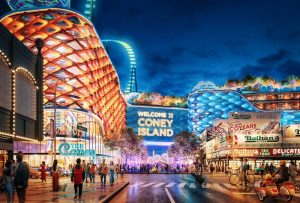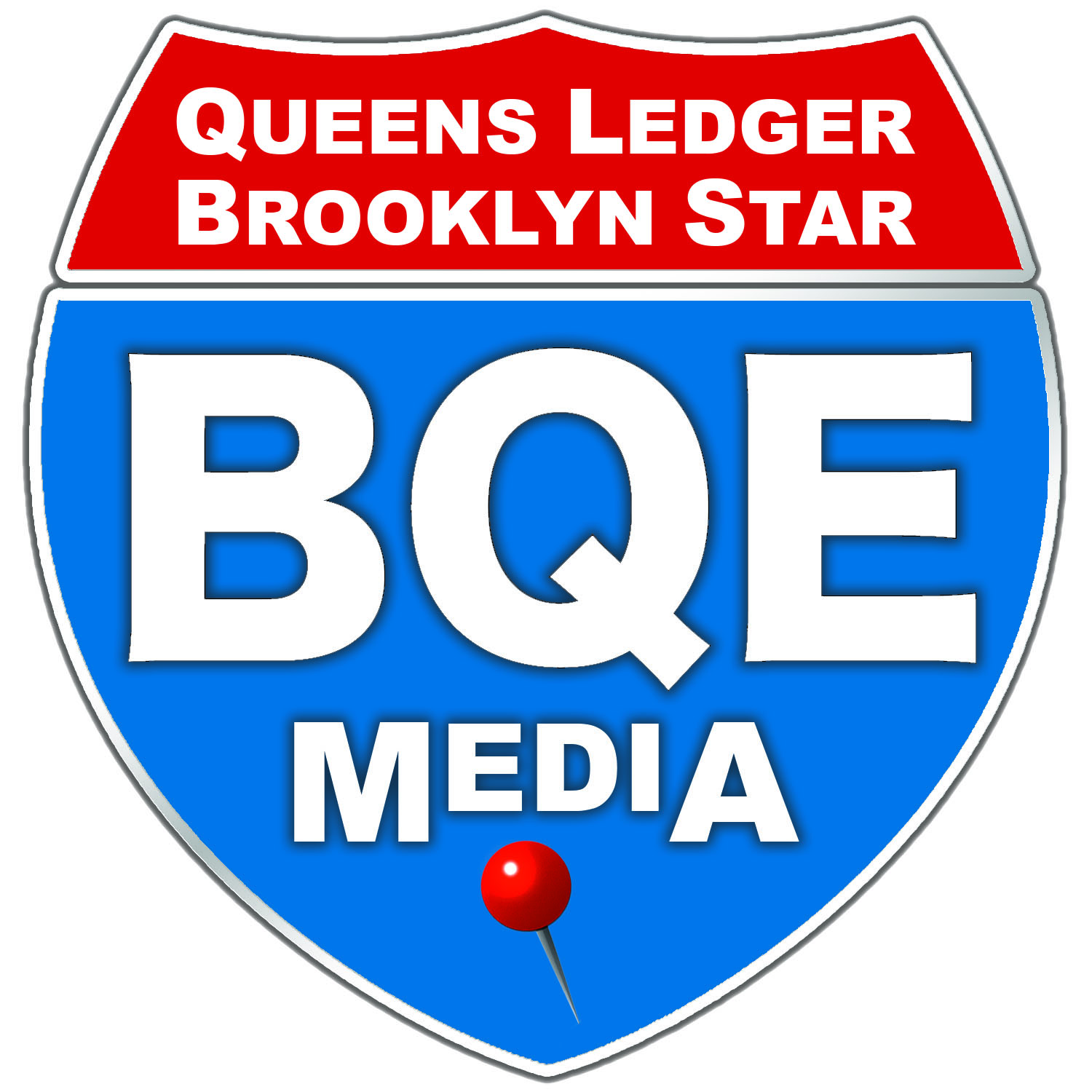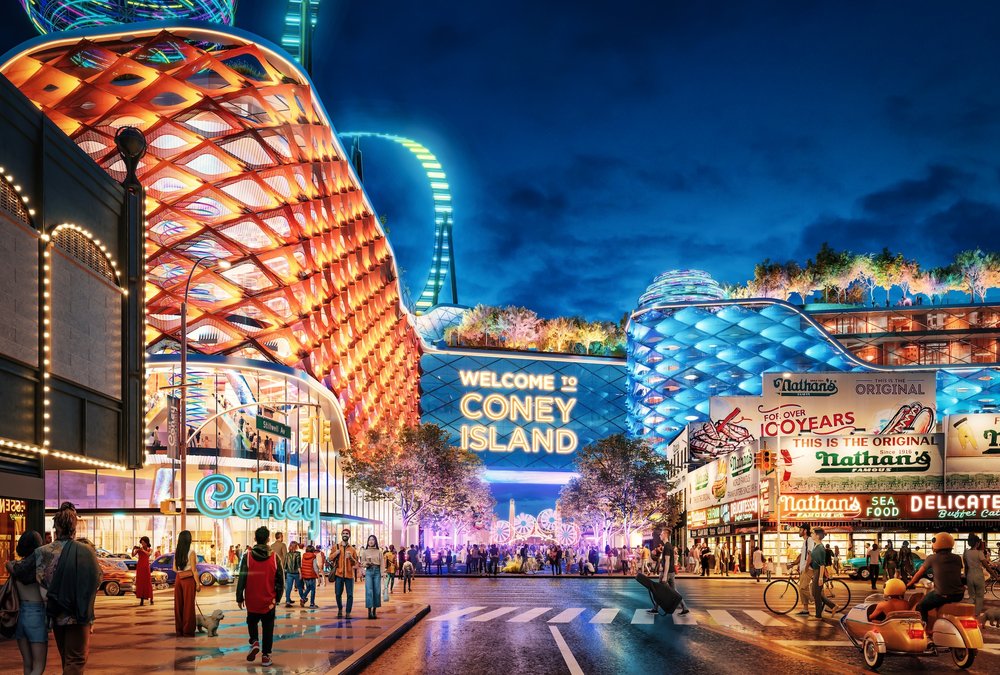Coney Island Residents Fight Casino Over Culture, Affordability

Photo courtesy of The Coney Project.
By MOHAMMED FARGHALY
mfarghaly@queensledger.com
A proposed casino and resort development in Coney Island has ignited a wave of impassioned debate among residents, business owners, advocacy groups, and city leaders—pitting economic opportunity against cultural preservation and neighborhood stability.
The plan, spearheaded by a consortium including Thor Equities, the Chickasaw Nation, Saratoga Casino Hotel, and Legends Hospitality, aims to transform five acres of mostly vacant land near Stillwell Avenue into a year-round entertainment hub. The multi-billion-dollar project would include a casino, hotel, public park space, on-site parking, and retail and dining venues designed to highlight Brooklyn-based businesses. Backers say the development would create thousands of construction and permanent jobs while revitalizing aging infrastructure and expanding tourism beyond the summer months.
“This project would guarantee significant investment in our community. Coney Island has been waiting for a year-round economy that creates not just jobs—but careers. Local residents would have access to job training and access to union jobs with a living wage and benefits,” the development group stated. “Our team has already been engaging with local businesses to ensure that additional visitors and activities benefit their business. We have experience and results to show that cross-promotional agreements—like discounts with a rewards card—can directly increase the sales and success of local business.”
Yet opposition to the project is fierce—and growing. Local housing organizations, cultural institutions, and residents have raised alarms about the potential impacts on community life, affordability, and Coney Island’s historic amusement district.
In a strongly worded statement, the Board of Directors of the Luna Park Housing Corporation—representing approximately 6,000 residents in one of Brooklyn’s largest Mitchell-Lama developments—declared its “vehement opposition” to the casino plan.
“The proposed casino in Coney Island, which would be located right across the street from our homes, poses a major and direct threat to our quality of life and our ability to even be able to continue living in our homes,” the board wrote, citing concerns about increased crime, traffic congestion, noise, and displacement of working-class families. “We will not support any politician who does not stand with us at this time.”

Photo courtesy of The Coney Project.
Opponents argue the casino could undermine one of the city’s last affordable coastal neighborhoods while endangering Coney Island’s legacy as a family-friendly and culturally rich destination.
Coney Island USA, a nonprofit arts organization known for producing the annual Mermaid Parade, Coney Island Film Festival, and the Coney Island Circus Sideshow, has warned that the development could overshadow or even eliminate long-standing amusement attractions.
“A billionaire developer is trying to replace Coney Island with a massive casino, hotel, and convention center that would cast shadows over the amusement area,” the organization said. “The Casino would remove almost half the rides and put the others at risk of disappearing. Soon the only rides left could be the Wonder Wheel and the Cyclone. Everything else could be gone. The future of Coney Island USA, the non-profit arts organization that sponsors the Mermaid Parade, could be put at risk, and the Mermaid Parade, one of New York’s most iconic and beloved events, could be gone forever!”
The development team has pledged to deliver union jobs with living wages, job training for local residents, and partnerships with local merchants through cross-promotional programs. They emphasize that their plan includes parkland, environmental resilience upgrades, and enhanced lighting and security.
But community leaders say the benefits are overstated—and the risks profound. To proceed, the casino proposal must receive two-thirds approval from a Community Advisory Committee composed of six key officials: the local Council Member, State Assembly Member, State Senator, Borough President, NYC Mayor, and New York’s Governor. While the City Council has already voted to support rezoning and the transfer of public air rights for the development, final approval is far from certain.
Advocacy groups have launched petitions and organized rallies urging the six officials to block the proposal. Critics say the decision-making process has lacked transparency and ignored widespread local opposition.
“This is a public land giveaway to a billionaire developer,” read a joint statement from several community organizations. “The future of Coney Island must be determined by its residents, not dictated by private deals behind closed doors.”

Photo courtesy of Luna Park.
Supporters counter that the project will address decades of underinvestment in the area, bringing infrastructure upgrades, added security, and new sources of tax revenue for the city and state.
The controversy has spotlighted a broader debate over the direction of urban development in New York: who benefits, who decides, and what kind of city residents want to build for future generations.
For some, the casino represents long-overdue revitalization. For others, it signals the loss of a beloved cultural icon. As the Community Advisory Committee prepares to weigh in, both sides are intensifying their campaigns—with the outcome likely to shape the future of Coney Island for decades to come.
As the state weighs up to three downstate casino licenses, the proposed Coney Island development is just one of several high-stakes projects vying for approval—and it’s far from the only one drawing intense local debate.In Queens, Mets owner Steve Cohen and Seminole Hard Rock are pushing for an $8 billion casino and entertainment district on the Citi Field parking lot. Like the Coney Island bid, the plan touts thousands of jobs, green space, and community investment. Initially, the project faced a political roadblock because State Senator Jessica Ramos had not introduced the required parkland alienation bill. However, State Senator Liu later introduced the bill, which has since been passed and signed into law, allowing the project to move forward with support from multiple local officials and labor unions. Meanwhile, another Queens proposal from Resorts World seeks to expand its existing racino into a full-scale casino resort—backed by billions in prior investment and broad political support, making it a front-runner despite questions about long-term revenue potential.
All three proposals promise economic revitalization, job creation, and upgraded infrastructure, yet they share a common challenge: navigating deep community skepticism. In Coney Island, critics say the proposed casino threatens cultural landmarks and working-class stability, echoing concerns raised in Queens over traffic, displacement, and the transformation of public land into private enterprise. While Resorts World faces less local resistance, both the Coney Island and Metropolitan Park projects have become flashpoints in a larger debate about urban development, equity, and who ultimately benefits from these billion-dollar bids. As public review processes continue and the state’s Gaming Facility Location Board prepares for a final decision later this year, the outcome of each bid may hinge not just on money or renderings—but on whether developers can truly win over the neighborhoods they aim to reshape.




